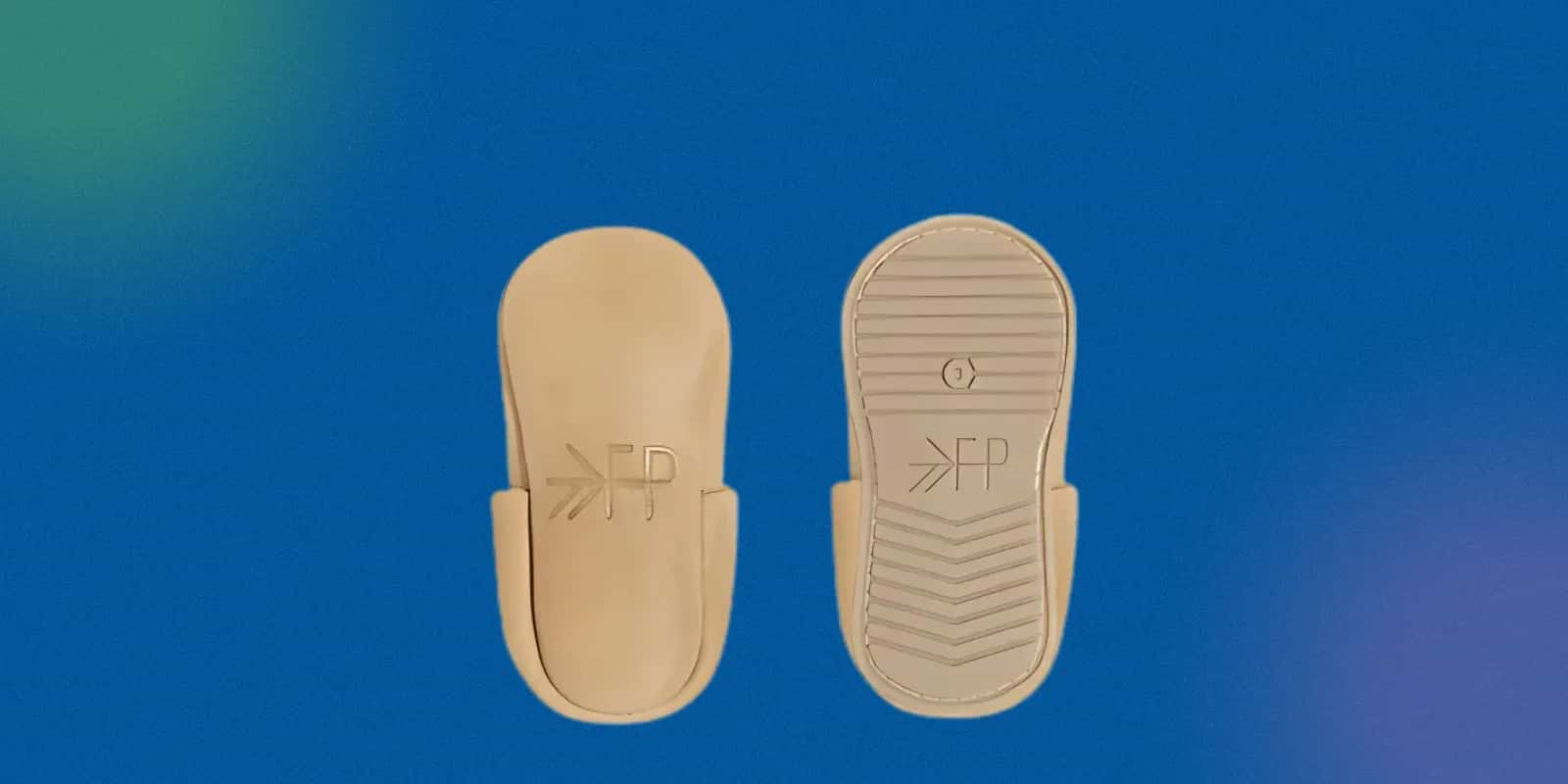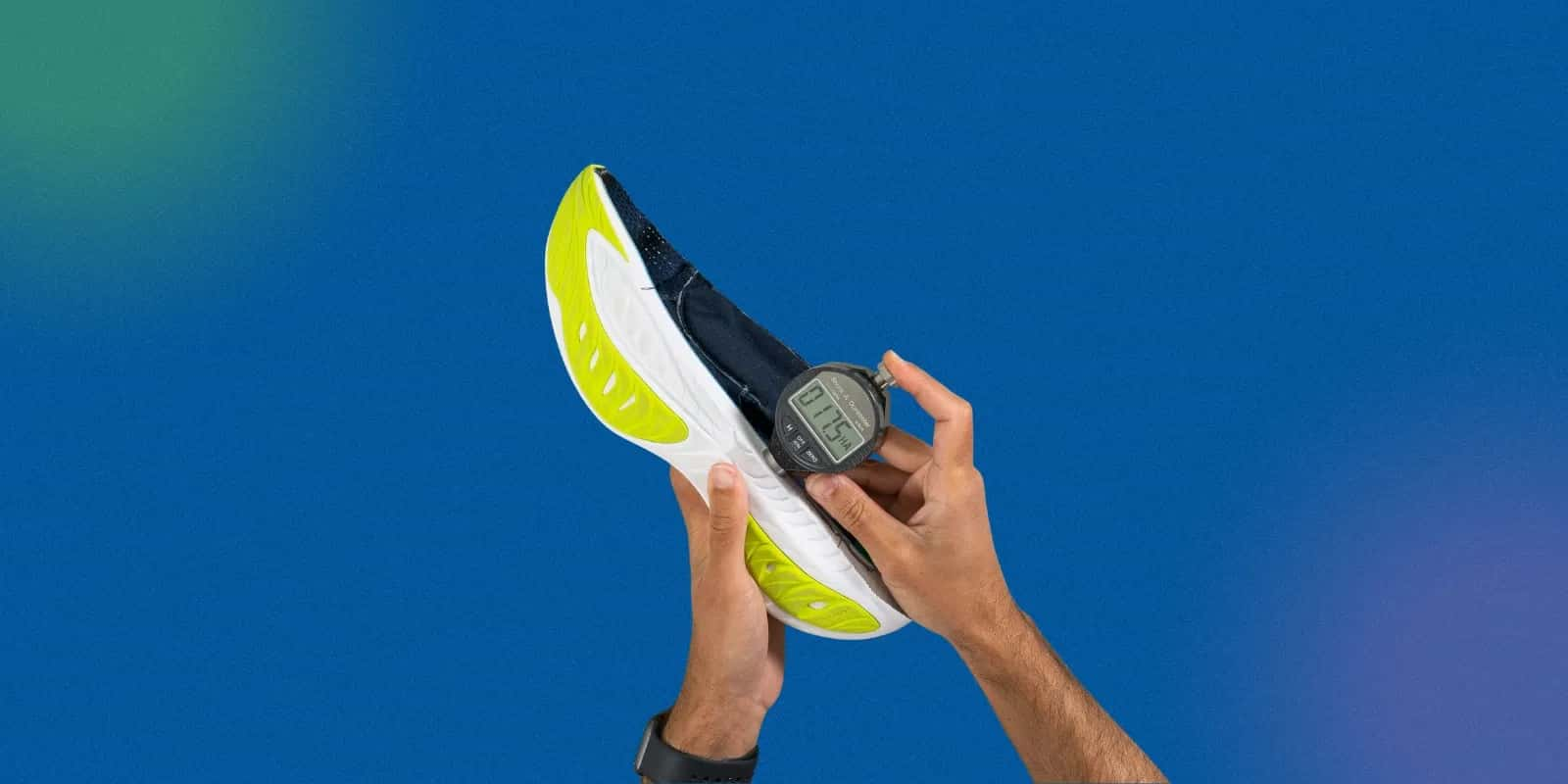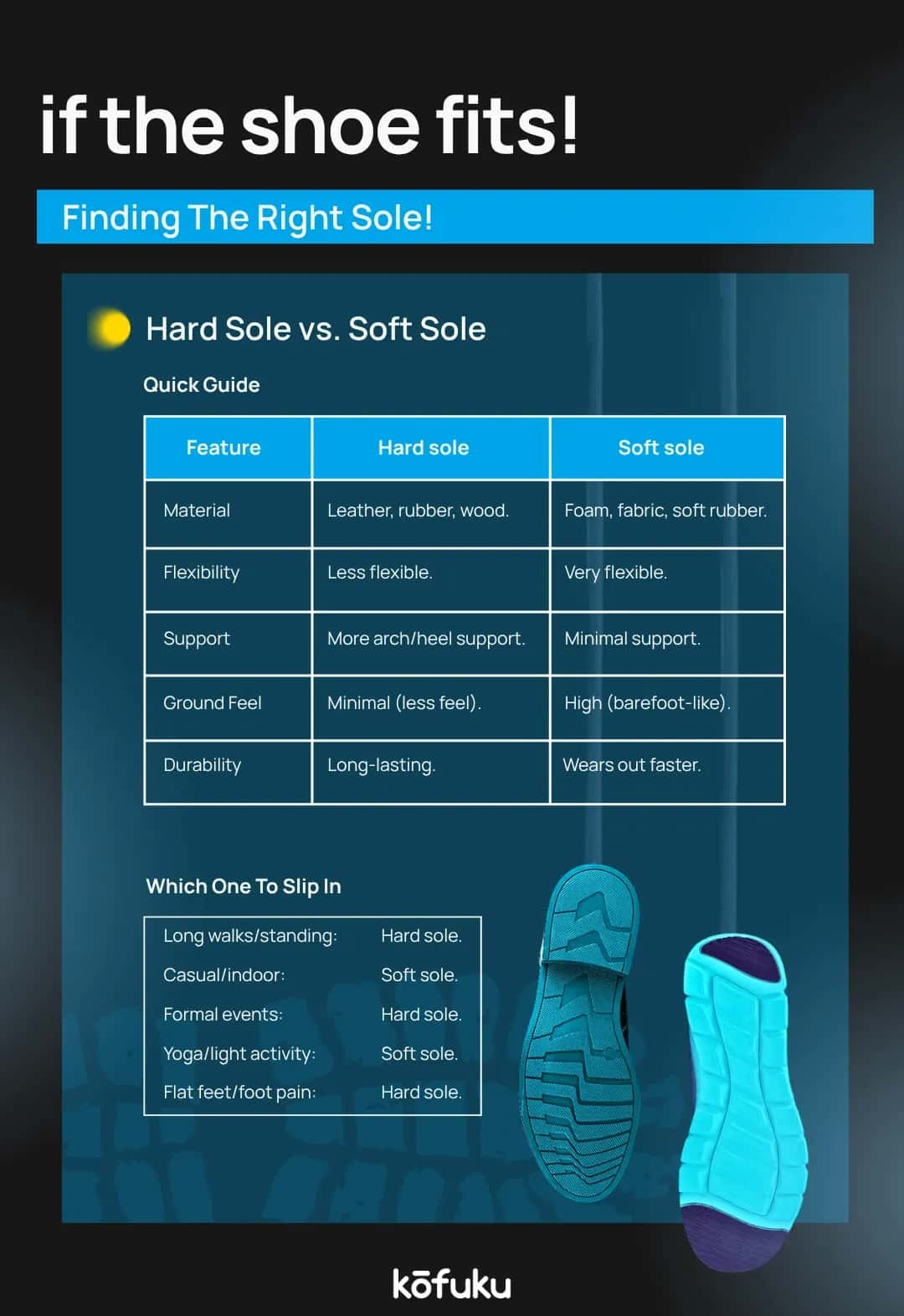Hard Sole vs Soft Sole Shoes: Which is Best for Your Feet?

Introduction
Similar to your morning chai, the kind of shoes you wear will determine your mood for the entire day. When you are wearing comfortable shoes, everything feels like spring, but when your shoes are uncomfortable, every moment feels like torture.
So, how do you select the right pair of shoes? Besides the colour and the style, there is so much to consider when buying the right shoes.
One of the most crucial factors in shoe selection is the sole structure. The sole of the shoe is the most important component that directly affects your walking; it can make your day smooth or traumatic.
The sole is the barrier between your foot and the ground and determines the critical elements such as comfort, durability, support and, ultimately, your mood!
Having a comfortable sole for your shoe can be good for your foot health and overall posture in the long term.
In this blog, we are going to compare soft sole shoes vs hard sole shoes by looking at their pros and cons, what kind of sole is best for your shoe, and more.
Benefits and Drawbacks of Soft-soled Shoes
Pros of Wearing Soft-Sole Footwear
Soft sole shoes offer several advantages, primarily focusing on comfort, natural foot movement, and sensory feedback. These benefits include enhanced flexibility, improved balance, and better foot development.
Soft-sole shoes also reduce the risk of slips and falls and promote a more natural gait. Let’s take a detailed look at the pros of wearing soft-soled shoes.
- Enhanced Comfort:
Soft soles provide a comfortable, cushioned feel that allows for a greater range of motion and a more natural foot movement. You could walk miles in soft-soled shoes and wouldn't feel discomfort or pain in your feet.
- Improved Balance:
By allowing the foot to feel the ground, soft-soled shoes can enhance balance and coordination, particularly in children learning to walk.
- Natural Foot Development:
For babies and children, soft-soled shoes promote healthy foot development by allowing for natural toe splay and muscle strengthening.
- Reduced Risk of Slips and Falls:
You may think that soft-sole shoes are less stable; however, they have a better grip and can help you avoid slips and falls because of a more natural foot strike.
- Improved Sensory Feedback:
Soft sole shoes will give more sensory feedback, informing the person wearing them how the ground is and how to move on it.
- Suitable for Various Activities:
Soft sole shoes can be worn in a variety of cases, whether it is ordinary day usage or slight physical activity where comfort and natural movement are valued.

Cons of Wearing Soft-Sole Footwear
Soft sole shoes, while offering several benefits, also present some drawbacks like the potential for reduced stability, increased risk of injuries, foot fatigue and misalignment issues. Let's take a look at these in detail.
- Limited Arch Support:
Soft sole shoes may not provide sufficient support for individuals with flat feet or high arches, increasing strain on the plantar fascia or ankles.
- Inadequate Shock Absorption:
For heavy walking or running on hard surfaces, soft-soled shoes may transmit impact forces more directly to the joints.
- Durability Concerns:
Thin materials in the soft sole shoes can wear out easily, potentially reducing their lifespan and increasing cost over time.
- Activity Limitations:
Soft soles are often unsuitable for rugged terrains, sports or professionals requiring protective footwear.
Advantages and Limitations of Hard-Soled Shoes
Pros of Wearing Hard-Sole Footwear
Hard sole shoes maintain a healthy alignment of the foot, thus offering more stability and protection. However, since the sole is hard, it can cause your feet to tire over time or lead to foot misalignment.
But hard-sole shoes can help you stand properly and also protect your knees and back. Now, let's see its advantages in detail.
- Better Shock Absorption:
Thicker soles cushion each step, reducing the impact on ankles, knees, hips and the back, especially during running or long-duration walking.
- Built-in Support and Stability:
Structured midsoles and heels aid support, beneficial for those with pronation issues, arch collapses or wearing orthotics.
- Durable and Protective:
Heavier materials withstand rough surfaces, provide weather protection, and are ideal for construction, walking, running on rough terrain, hiking, or cold climates.
- Specific Activity Designs:
Many hard-soled shoes are engineered for activities such as trail running, sports or workplace safety, offering targeted features like traction or ankle support.
- Cushioning Myths:
Although cushioning may dampen impact sensation without lowering joint load, for many, the perceived comfort is beneficial.
Cons of Wearing Hard-Sole Footwear
The hard-soled shoes also have some disadvantages. They are usually not cushioned, and they might not be a good, comfortable choice for most people.
Additionally, footwear with hard soles can inhibit some actions since the shoe is inflexible and limits foot movements in terms of flexibility and range of motion. Let’s take a detailed look at them.
- Reduced Natural Foot Function:
Thick soles may limit foot flexion and reduce the engagement of intrinsic muscles, potentially weakening the arch over time.
- Increased Joint Forces:
Certain studies indicate that changing gait by wearing cushioned running shoes might contribute to stiffening legs and raising impact.
- Heavier Weight:
Bulkier shoes may increase fatigue and place more weight on the ankles, causing pain and discomfort.
- Less Ground Feel:
Hard-soled shoes reduce the sense of sensorial information, and this can be disabling in promoting balance and stability in joints, especially among elderly people.
- Potential Restriction:
Stiff mid-soles and toe-box may limit normal foot growth and toe splay.

Hard Sole vs Soft Sole Shoes: How to Choose?
Consider the following factors when selecting a comfortable sole shoe option for yourself.
Your Activity
- Soft soles suit indoor use, minimalist trainers, and early child development.
- Hard soles are better for long-distance walking, running, outdoor use, or unstable terrains.
Foot Type and Biometrics
- Flat feet or overpronation may require supportive hard soles with arch control.
- Neutral foot types may be more tolerant of softer or minimalist designs.
Comfort Preference vs Long-Term Function
- Cushioning may feel pleasant instantly, but allowing foot muscles to work (via hard soles) supports long-term health.
Transition Gradually
- If switching from hard to soft or soft to hard soles, start slowly to allow muscles and connective tissues to adapt.
Mix Your Footwear
- Wearing different shoes promotes diverse muscle activity and reduces overuse injuries.
Fit, Flex and Toe Room
- Ensure your shoe bends at the ball of the foot and offers wiggle room in the toe box.
Replace Worn Shoes
- Soles flatten over time; replace shoes every 500-800 kilometres to maintain shock absorption.

FAQs
Q. What’s the difference between hard-soled and soft-soled shoes?
A. Hard sole shoes feature rigid, non-flexible soles that provide proper stability to the feet. On the other hand, soft sole shoes include flexible and cushioned insoles that are designed to absorb shock effectively and offer comfort while walking.
Q. Are soft-soled shoes better for walking or running?
A. Yes, soft sole shoes are designed for walking and running due to their proper cushioning, flexibility, and shock-absorbing mechanism. It further helps decrease the impact on muscles and the foot joint. In this way, they are best for performing high-impact activities effortlessly.
Q. Do hard-soled shoes provide better arch support?
A. Yes, hard soles are designed to provide good arch support for the feet. They help in redistributing the pressure and decreasing stress on the arches while walking.
Therefore, they are best for people with flat feet. Nevertheless, you must opt for the shoes that offer a cushioned insole to complement the hard sole easily.
Q. Which type of sole is better for people with flat feet?
A. For people with flat feet, it is recommended to opt for a hard sole for extra arch support. Rigid sole also allows the redistribution of pressure and get rid of any stress on arches. It is also necessary to consult a podiatrist or orthotist to determine the right shoes for your specific requirements.
Q. Can switching from soft to hard soles affect foot health?
A. Switching from soft to hard soles can severely affect foot health if done quickly. Hard soles offer extra stability and support, but also lead to discomfort, foot pain, or blisters if the feet are not used to hard soles.
You can simply transition from soft to hard soles gradually because feet also take time to adapt to a particular sole.

ABC Juice: Benefits, Recipe, and Side Effects

Benefits of Coconut Sprouts: Nutrition in a Nutshell

Benefits of CCF Tea That You Should Know About

8 Reasons Why Fitness Is Crucial for Heart Health

The Footwear of Futility: 6 Problems of Wearing the Wrong Shoe


